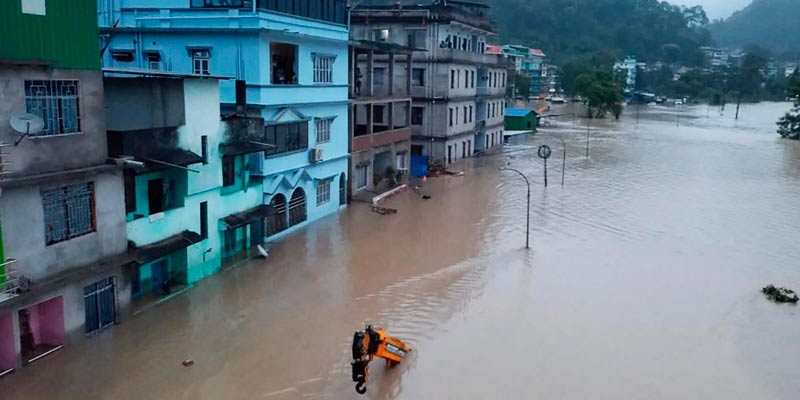- India
- Oct 07
Explainer - Glacial Lake Outburst Flood
• Twenty-six people, including seven Armymen, were killed in a flash flood in the Teesta river that devastated Sikkim.
• The ministry of home affairs (MHA) has formed an Inter-Ministerial Central Team (IMCT), which will visit the affected areas of Sikkim to make an assessment of the damage caused due to a Glacial Lake Outburst Flood (GLOF), cloudburst and flash flood.
• A GLOF occurred in parts of Lhonak Lake, leading to a rapid rise in water levels with very high velocities downstream along the Teesta River Basin in the early hours of October 4. This resulted in severe damage in Mangan, Gangtok, Pakyong and Namchi districts.
• Several occasions in the last two decades have seen government agencies and research studies warning about potential Glacial Lake Outburst Floods (GLOFs) in Sikkim.
What is Glacial Lake Outburst Flood?
• Flash floods caused by the outburst of glacial lakes, called as Glacial Lake Outburst Flood (GLOF), are well known in the Himalayan region where such lakes had often been formed by landslides.
• Glacial lakes are common in the high elevation of glacier basin. They are formed when glacial ice or moraines or natural depressions impound water.
• There are varieties of such lakes, ranging from melt water ponds on the surface of glaciers to large lakes in valleys dammed by a glacier in the main valley. These lakes normally drain their water through seepage in front of the retreating glacier.
• The moraine creates topographic depression in which the melt water is generally accumulated leading to formation of glacial lake. When this lake is watertight, melt waters will accumulate in the basin until seepage or overflow limits the lake level.
• GLOFs have immense potential of flooding in downstream areas, causing disastrous consequences due to release of large volumes of water in a very short interval of time.
• Most often, the consequences arising out of such situations are highly unpredictable primarily due to lack of availability of sufficient data regarding rainfall intensity, location of landslide, impounded volume and area and physical conditions of lakes/ water bodies.
• GLOFs are not a new phenomenon but with the worldwide receding of glaciers and rising temperature the probability of their occurrences has risen in many mountain ranges.
• The frequency of GLOF events is increasing in the Hindu Kush Himalayan (HKH) region since the second half of the 20th century due to the combined effects of climate change and deforestation.
Manorama Yearbook app is now available on Google Play Store and iOS App Store

